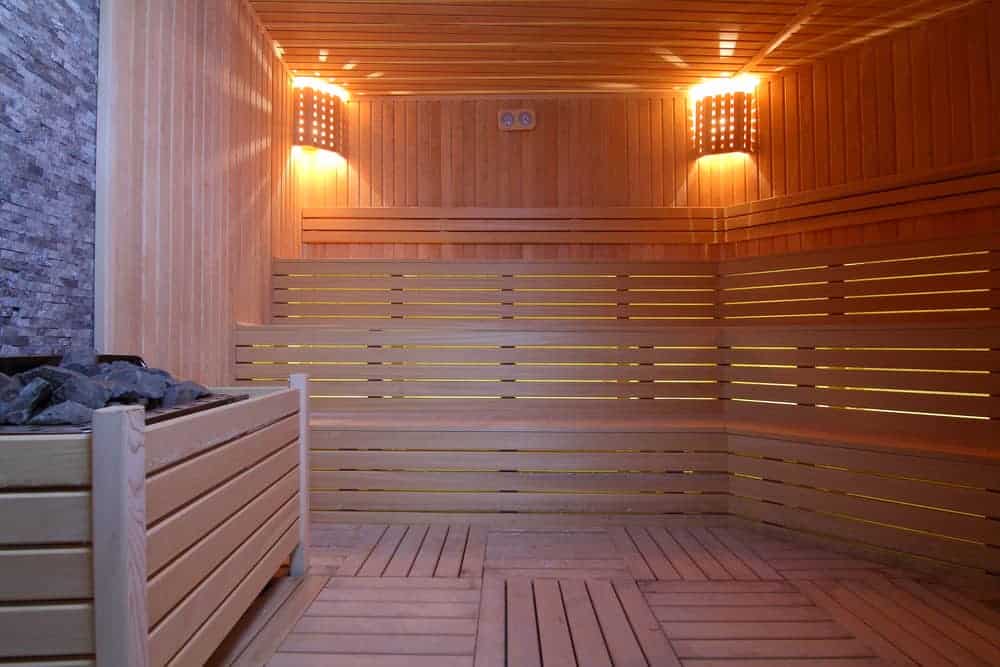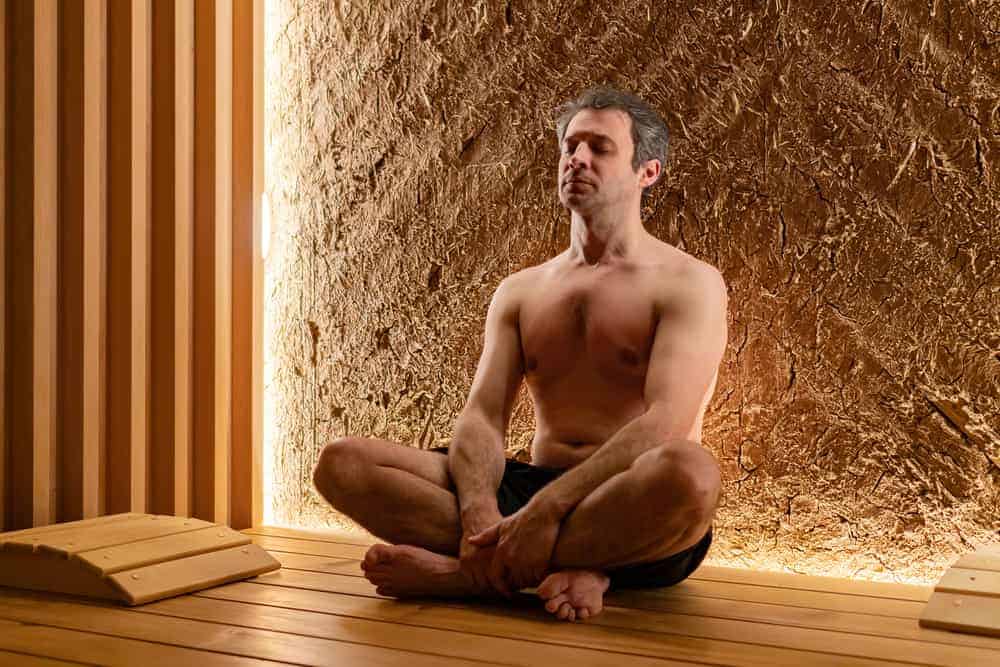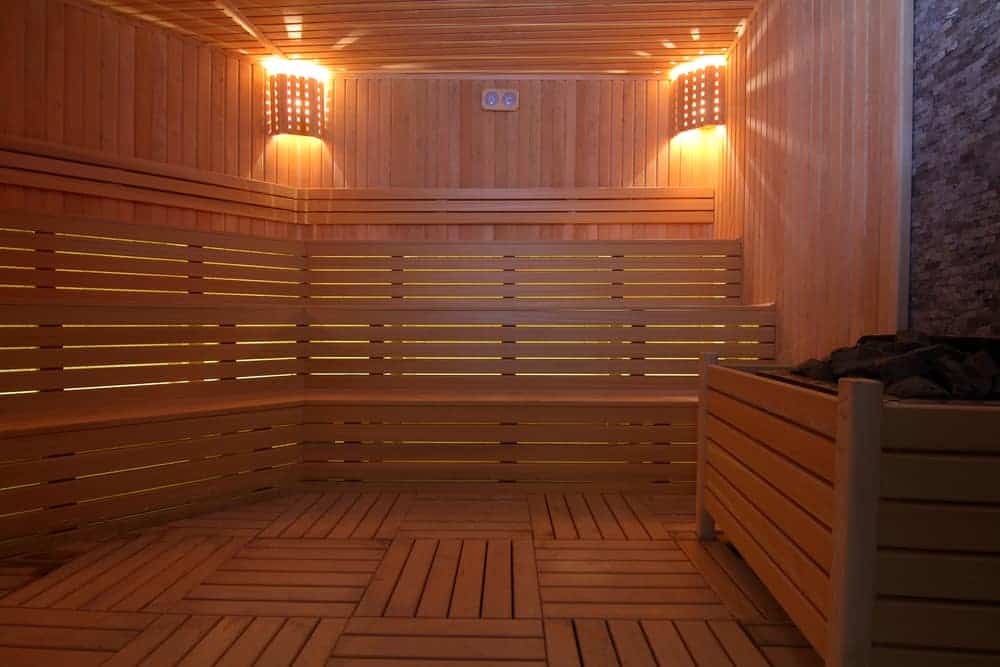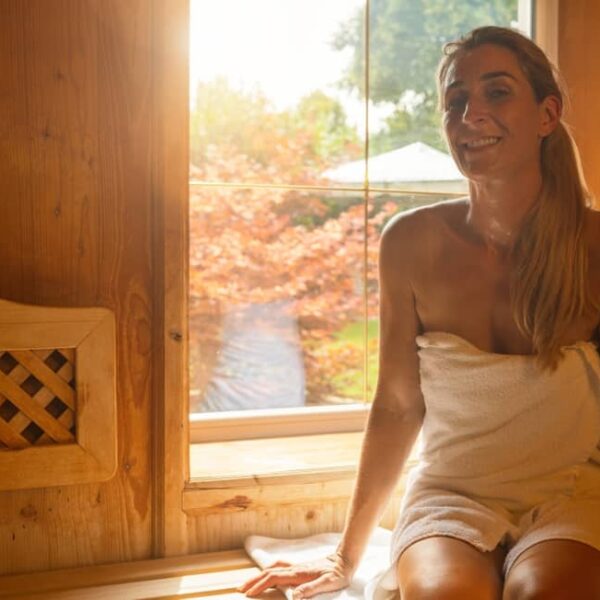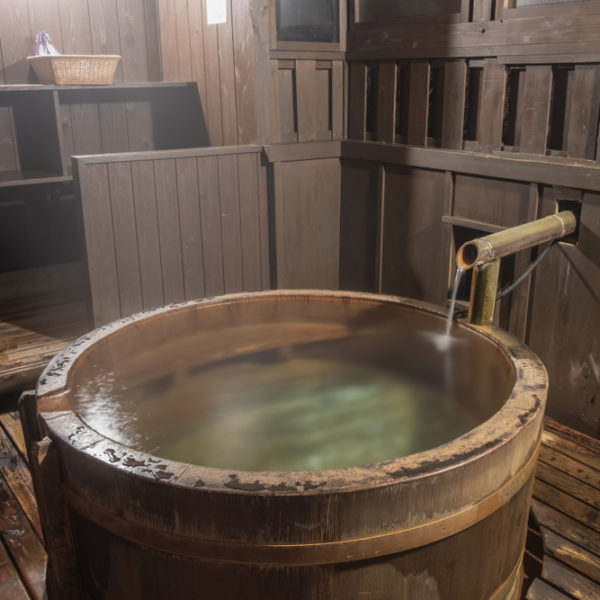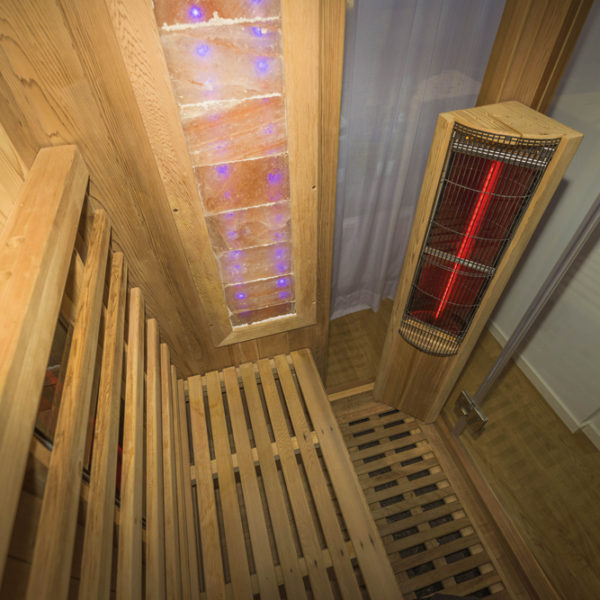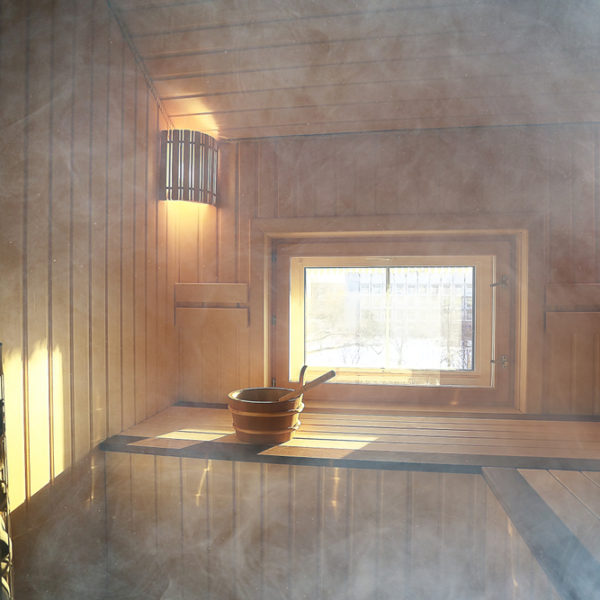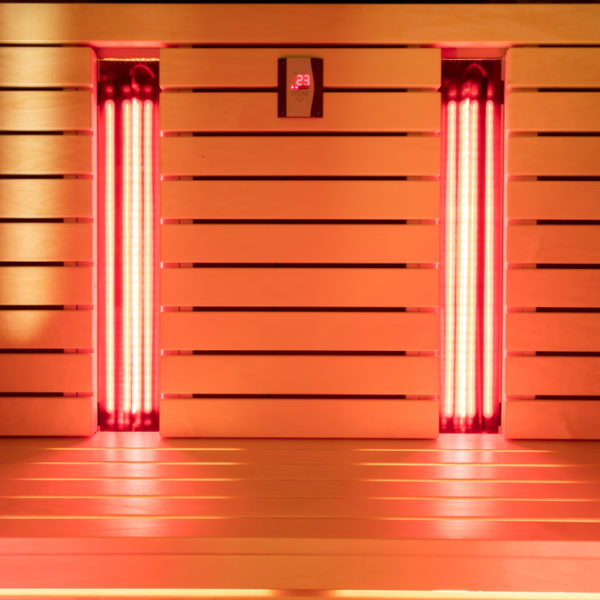Are you ready to discover the different flooring options available for your residential or commercial sauna space?
Sometimes the aesthetic appeal of a sauna is given more consideration than more functional and practical flooring resolutions. Your decision should reflect careful consideration of the various health and safety concerns, especially during this time of a worldwide pandemic.
This article aims to help you understand the four main characteristics of an informed flooring choice for your sauna space.
Flooring Essentials
The North American Sauna Society states saunas ought to be designed with “a smooth and level waterproof floor. The floor can be tile, concrete, or vinyl (not carpet!).”
Furthermore, sauna flooring should meet four essential criteria:
- Slip-resistant
- Non-absorbent
- Non-porous
- Easy to maintain (quick return to service after cleaning)
Please note, I have decided to resist the addition of attractiveness to this list- although it would be nice, the features I mentioned above are more critical.
However, do not be discouraged or dismayed because today’s sauna flooring industry offers a variety of attractive solutions that meet and exceed the four primary criteria.
Sauna Flooring Considerations
A sauna’s flooring will most usually be the coolest area of the spa enclosure because, as you know, heat rises. Although the flooring should not rise much higher than room temperature, you should also stay away from any flooring or coating options that could contain chemicals.
Often is the case people will extend their home’s existing flooring into the sauna space. While this may be acceptable, you will need to gauge its efficiency per the four essential criteria already disclosed.
If you doubt that your existing flooring will present a suitable base for your sauna, I highly recommend that you consult with a local flooring specialist for further advice.
Flooring 101
We will look at various flooring options in this article, but you must remember that humid environments are the breeding ground for bacteria, mold, and other microorganisms.
Steam saunas typically operate between the temperature range of 110 and 200 degrees Fahrenheit. Saunas produce dry heat; however, most commonly, water is poured over heated sauna rocks to create hissing steam, thus significantly raising the room’s humidity levels.
Typically, steam saunas operate similarly, although their heating methods may differ. For example, saunas may either use a more traditional mode of heat transfer known as convection or turn to radiation as a more contemporary model.
So, what’s the difference?
Well, heat can target the human body differently. Convection, as used by wood-burning, electric, and gas-heated saunas, increases the temperature of the space. By default, we absorb this heat, raising our body temperatures because of our surrounding environment.
On the other hand, radiant heat directly penetrates our skin’s surface, thus raising our body temperatures more effectively. Infrared saunas use specialized heating panels made from carbon fiber or ceramic to emit infrared radiation, traveling in straight lines.
Regardless of the heating method employed, the clinical and wellness industries seem to agree that saunas produce numerous therapeutic benefits through their coveted heat+sweat therapy.
Realize that each type of sauna operates at slightly different temperature levels because of the variance in their intended effects. In addition, infrared saunas produce no humidity and operate at much lower temperatures than their counterparts.
Saunas tend to place unique demands on the materials used in their design. In addition, with widespread use in public facilities and increasing popularity as an in-home luxury feature, one must adequately evaluate the effects of consistently fluctuating high heat and humidity levels in these spaces.
Commercial vs. Residential Saunas
In public settings, the cleaning and maintenance routine significantly affects the type of flooring used. For example, commercial sauna applications typically require a floor drain to remove waste (sweat toxins) from its bathers and for cleaning purposes.
Typically, cleaning the floors of larger sauna installations will include the use of a water hose. However, a water hose is unnecessary in smaller residential settings because you can use a damp mop for cleaning.
In either application, Finlandia Sauna advocates against the use of wood flooring because of its tendency to “absorb perspiration, [which] facilitates odor-causing bacteria.” In addition, they state that wood is not able to be thoroughly cleaned.
Sauna Flooring Materials
Let us now explore a range of various flooring materials that people may consider in their pre-installation sauna design.
1. Wood
Steam saunas and infrared saunas typically embellish a softwood interior.
Softwood is energy-efficient and generally a good option for sauna walls; however, wood products tend to be porous and absorbent.
So to better prevent sweat stains on the wooden benches, it is advised to sit atop a folded towel. Some people also choose to place a small cloth under their feet for hygiene purposes, especially in public sauna spaces.
Saunas should undergo “thorough hosing and scrubbing once a week, including the lighting fixtures, if wood is used in hot and moist environments.”
2. Tiles
Tile flooring is a fairly common choice in bathroom settings. So, if you are contemplating extending this as the base for your sauna enclosure, I urge you to consider one critical factor- the nature of its installation.
Ceramic or porcelain tiles are an effective and popular flooring choice for wet rooms and sauna spaces alike. Although neither of these materials is known to accumulate liquid, please note that ceramic is more porous than porcelain, thus leading to a higher chance of water absorption.
So, even though it should not be too difficult to find a tile that is both non-porous and non-absorbent, it still poses some threat to health and hygiene standards.
Unfortunately, the grout used to install the tile does not share the same characteristics as the tile itself. Its relatively porous nature is also quite hard to maintain thoroughly clean.
Another downside to tile is its comfort level underfoot. In addition, tile requires more time and a significant amount of energy to heat up. And, although slip-resistant tile alternatives exist, you still need to exercise caution when walking upon it wet. A fall on tile flooring will hurt.
Finally, you could choose to finish your tile floor with an appropriate sealer, such as Rust-oleum’s 511 Impregnator, for a fully waterproof result.
3. Concrete
Setting your sauna atop a concrete floor is perhaps as easy and efficient as it gets. One article reports concrete as “always being the best option for sauna floors.”
Again, concrete may be a bit chilly underfoot, but you may choose to
integrate electric floor heating within the space to increase underfoot comfort and hasten dry time after use or cleaning.
A popular option in various sauna settings is an aesthetically pleasing combination of a concrete base layer with wooden duckboards laid out on top.
Cement flooring is an incomplete flooring option on its own. For a sauna space application, concrete requires a sealing topcoat to meet all four essential requirements we have reviewed thus far, including slip-resistant, non-absorbent, non-porous, and easy to maintain.
Florock offers a variety of epoxy and polyurethane coatings for concrete application. In addition, their flooring options are high-functioning waterproof guaranteed.
It will behoove you to speak with a Florock expert for professional advice on your specific installation; however, they have a solution for practically any flooring requirement.
An epoxy or polyurethane coating atop cement can be applied to meet a variety of aesthetic desires. So still is the case that many saunas will opt for a duckboard finish.
Another polymer option to consider is polyurea. Polyurethane and epoxy coatings have indeed been on the market for decades for those interested in protecting their flooring.
These coatings are known as being particularly resistant to corrosion, temperature fluctuation, and chemical abrasion. The driving concept behind polyurea is enhanced flexibility and even superior strength to that of its predecessors.
Duckboard is a pre-cut wooden tile that offers the sauna place a certain luxury flooring appeal. However, the primary benefit of duckboard is that you can easily remove it for sauna cleaning.
Hardwood duckboards usually are fitted with rubber feet to prevent damage to the sauna underfloor. Alternatively, the duckboard may have a rubber base attached to the individual tiles which snap together.
The purpose of the base layer or rubber feet under the duckboard is to allow for drainage and to prevent the wood from being consistently immersed in water.
4. Microcement
According to Australian-based Alternative Surfaces, microcement “is a cement and polymer-based coating which is thinly applied to floors, walls and in some cases joinery in residential and commercial environments to create a concrete look.”
Microcement is a popular yet expensive flooring solution in the luxury industry. It is entirely waterproof and offers extraordinary resistance to environmental humidity.
Microcement will require trained and experienced installers as its hand-troweled installation is an art form in itself. However, one significant advantage of microcement over the other materials I have discussed is that it creates a germ and bacteria-free space that remains easy to clean and maintain by simply using water and pH-neutral soap.
Underfloor heating is perfectly compatible with microcement flooring.
In addition, microcement is slip-resistant and can withstand scuffs, scratches, or stains- it is nearly impervious to cracking.
Structurally or aesthetically speaking, imperfections in a microcement solution will be mainly caused by not strictly adhering to the fundamental steps of its application, especially in regards to the priming and sealing stages.
Top Recommended Choice
Cement flooring is the ideal solution for any sauna space. With adequate sealing, it offers a functional and practical system that compliments the varying requirements of a sauna space.
If paying between $80 and $150 per square meter for material and installation of microcement sounds too steep, you can certainly choose to work with the cement subfloor that most likely already exists.
The most feasible option for your sauna flooring may be a combination of materials previously discussed. A removal duckboard system is a beautiful way to add comfort underfoot while not exposing your sauna to additional concerns.
One option that I did not list above is similar to a wooden duckboard. You may turn to GreatMats, and find a rubber and plastic snap-in-place wet area tile. These tiles are easy to install and comfortable to walk on.
In addition, wet area tiles will not trap water underneath and are easy to remove for sauna cleaning. Generally, individual tiles cost between $3.50 and $6.
Your sauna project budget may significantly increase as you begin to tally up the various materials. Also, another consideration may be the convenience of a floating top floor.
Even though duckboard and wet tiles may be simple enough to pull up and remove for weekly deep cleaning of the sauna space, this task may feel tedious after a while.
If you can find a way to afford microcement financially, this installation may be the best all-in-one solution for your sauna floor. If you want to indulge, even more, feel free to add a foot-length of duckboard planking around the perimeter of the sauna interior.
It would be unnecessary to bring the duckboard all the way around to the entranceway of the sauna. So instead, I imagine designing the duckboard plank in a u-shape to accommodate yourself or sauna clients with an extra piece of underfoot comfort placed directly in front of the bench seating.
The design and additional flooring features for a sauna installation are endless. However, with numerous options to consider, the most important thing is to ensure a functionally safe and clean environment.
I believe that ensuring a safe and clean environment adds to the level of comfort and degree of relaxation that one can enjoy. I don’t know about you, but I would not take one step into a sauna that looked otherwise.
Conclusion
Sauna flooring must meet certain specifications to meet the demands of both residential and commercial sauna use. These spa-like spaces are often high-traffic zones that are susceptible to frequent temperature and humidity fluctuations.
Your sauna floor must be entirely waterproof, slip-resistant, non-absorbent, non-porous, anti-microbial, and preferably easy to maintain.
Would you mind sharing your thoughts or concerns regarding the best material for sauna flooring below?
